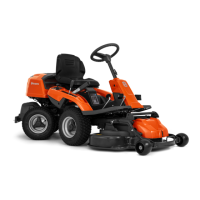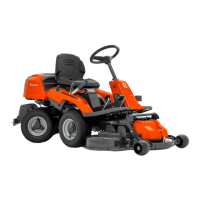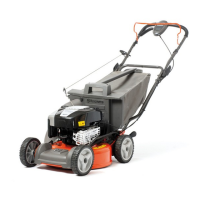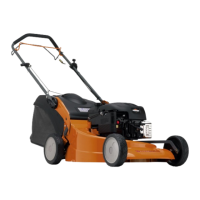What to do if Husqvarna Construction Equipment transmission does not have sufficient power?
- UuwaltonSep 23, 2025
If the transmission lacks sufficient power, check the transmission oil level. There may be no oil, or the oil level may be too low.
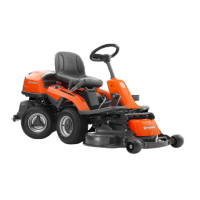
What to do if Husqvarna Construction Equipment transmission does not have sufficient power?
If the transmission lacks sufficient power, check the transmission oil level. There may be no oil, or the oil level may be too low.
Why is my Husqvarna R 214TC starter motor not turning over the engine?
If the starter motor on your Husqvarna Lawn Mower isn't turning over the engine, it could be due to: * A flat battery: Charge the battery. * Bad contact between the cable and battery: Check and secure the connections. * The lift lever for the cutting unit being in the wrong position: Position the lift lever correctly. * A blown main fuse: Replace the main fuse. * A faulty ignition lock: Replace the ignition lock. * The brake not being activated: Activate the brake. * A faulty starter motor: Replace the starter motor.
Why is my Husqvarna R 214TC Lawn Mower mowing unevenly?
Uneven mowing with your Husqvarna Lawn Mower can result from: * Blunt blades: Sharpen the blades. * Long or wet grass: Adjust mowing height or mow when grass is dry. * Skew cutting unit: Align the cutting unit. * Grass blockage under the hood: Clear the blockage. * Different tire pressures: Adjust the tire pressures. * Over-speeding: Reduce speed. * Engine speed too low: Increase engine speed. * Slipping drive belt: Inspect and replace the drive belt.
What to do if the Husqvarna R 214TC Lawn Mower start motor does not start?
If the start motor of your Husqvarna Lawn Mower doesn't start, several factors could be the cause. First, make sure the cutting deck is not lowered; if it is, move the lift lever to the top position. Also, ensure the parking brake is applied. Check the battery voltage; if it's low, replace the fuse and charge the battery. Other potential solutions include repairing or replacing the wiring, replacing the ignition switch or starter relay, or replacing a defective microswitch for the parking brake or lift lever. Finally, tighten the ground cable.
Why won't my Husqvarna R 214TC Lawn Mower start motor turn over?
Several issues can prevent the start motor from turning over on your Husqvarna Lawn Mower. These include a lowered cutting deck (move the lift lever to the top position), the parking brake not being applied (apply the parking brake), or low battery voltage (replace the fuse and charge the battery). Additional causes may be wiring faults, a defective parking brake micro-switch, or a defective lift lever microswitch, requiring component repair or replacement.
Why does Husqvarna Construction Equipment engine apparently has no power?
If the engine seems to lack power, a likely cause is a clogged air filter.
Why won't the Husqvarna Construction Equipment starter motor turn the engine over?
The starter motor might not turn over the engine due to several reasons: * The parking brake isn't applied. * The cutting deck lift lever is in the mowing position. * The main fuse has blown. * There's a bad connection between the cable and the battery. * The battery is too weak.
Why does Husqvarna Construction Equipment cutting result is unsatisfactory?
An unsatisfactory cutting result with your Husqvarna Construction Equipment can occur due to several factors: * The blades may be blunt. * The grass is either too long or wet. * There's a grass blockage in the cutting deck. * The tire pressure differs between the right and left sides.
Why does my Husqvarna R 214TC Lawn Mower engine have no power?
If your Husqvarna Lawn Mower seems to lack power, it could be due to a clogged air filter, a defective spark plug, dirt in the carburetor or fuel line, or an incorrectly adjusted throttle cable.
What to do if Husqvarna R 214TC Lawn Mower battery does not charge?
If your Husqvarna Lawn Mower battery isn't charging, it might be due to: * One or more faulty battery cells: Replace the faulty battery cells. * Poor contact on the battery terminal cable connectors: Check and secure the connections.
| Engine Manufacturer | Briggs & Stratton |
|---|---|
| Cylinders | 1 |
| Cutting Width | 94 cm |
| Cutting Height Min | 25 mm |
| Cutting Height Max | 75 mm |
| Transmission Type | Hydrostatic |
| Drive Method | Rear-Wheel Drive |
| Engine Cooling | Air |
| Fuel Type | Gasoline |
| Engine Lubrication Type | Full pressure |
| Oil Filter | Yes |
| Transmission Manufacturer | Tuff Torq |
| Drive | Rear-wheel drive |
| Speed Forward, min-max | 0-9 km/h |
| Uncut Circle | 30 cm |
| Blade Engagement | Manual |
| Blades | 3 |
| Seat Material | Vinyl |
| Hour Meter Type | Digital |
| Parking Brake, Type | Disc |
| Cutting Methods | BioClip®/Rear discharge |
| Wheel Size Rear | 170/60-8 |
Details about pre-delivery inspection and product identification.
Overview of product features, purpose, and insurance advice.
Identifies and describes key components and controls of the product.
Details electrical components, pedals, hour meter, and cutting deck operation.
Explains the safety system that stops the engine when the operator leaves the seat.
Explains safety warnings and operational symbols used on the product.
Defines safety terms and provides essential general safety guidelines.
Warns about electromagnetic fields and their potential interference with medical implants.
Safety measures to protect children and safe operating practices.
Procedures for checking safety devices, ignition lock, pedals, and parking brake.
Lists necessary conditions before the engine can be started.
Guidelines for cutting grass on slopes and safe fuel handling.
Safety guidelines for battery, maintenance, and engine exhaust.
Instructions for attaching the cutting deck and a warning about the drive belt spring.
Covers pre-operation checks, app setup, and fueling procedures.
Guides for adjusting seat position and steering wheel height.
Explains engaging drive, and lifting/lowering the cutting deck.
Step-by-step guide for starting the engine and operating the product.
How to stop, brake, get good cuts, and an introduction to the maintenance schedule.
Specific maintenance tasks for product preparation and engine servicing.
Maintenance for transmission/cutting deck and product cleaning procedures.
How to clean engine, muffler, air intake, and remove covers.
Procedures for removing covers, checking steering, and replacing the fuel filter.
How to examine/replace spark plugs and the main fuse.
Replacing lamps, charging batteries, and emergency engine starting.
Connecting jumper cables, tire pressure specs, and preparing the cutting deck.
Adjusting mow position, ground pressure, and checking cutting deck parallelism.
Adjusting deck parallelism and servicing the BioClip plug.
How to inspect, replace blades, and check engine oil level.
Detailed steps for replacing engine oil and oil filter.
How to check transmission oil and lubricate the belt adjuster.
Addresses common issues with engine, transmission, and vibration.
Guidelines for transporting, storing, and fuel handling safety.
Procedures for disposing of chemicals, products, and batteries responsibly.
Specifications for the product's physical dimensions and engine details.
Data on speed, oil, electrical systems, battery, and cutting deck types.
Data on noise/vibration, service recommendations, and warranty details.
Declares compliance with EU directives and lists registered trademarks.

